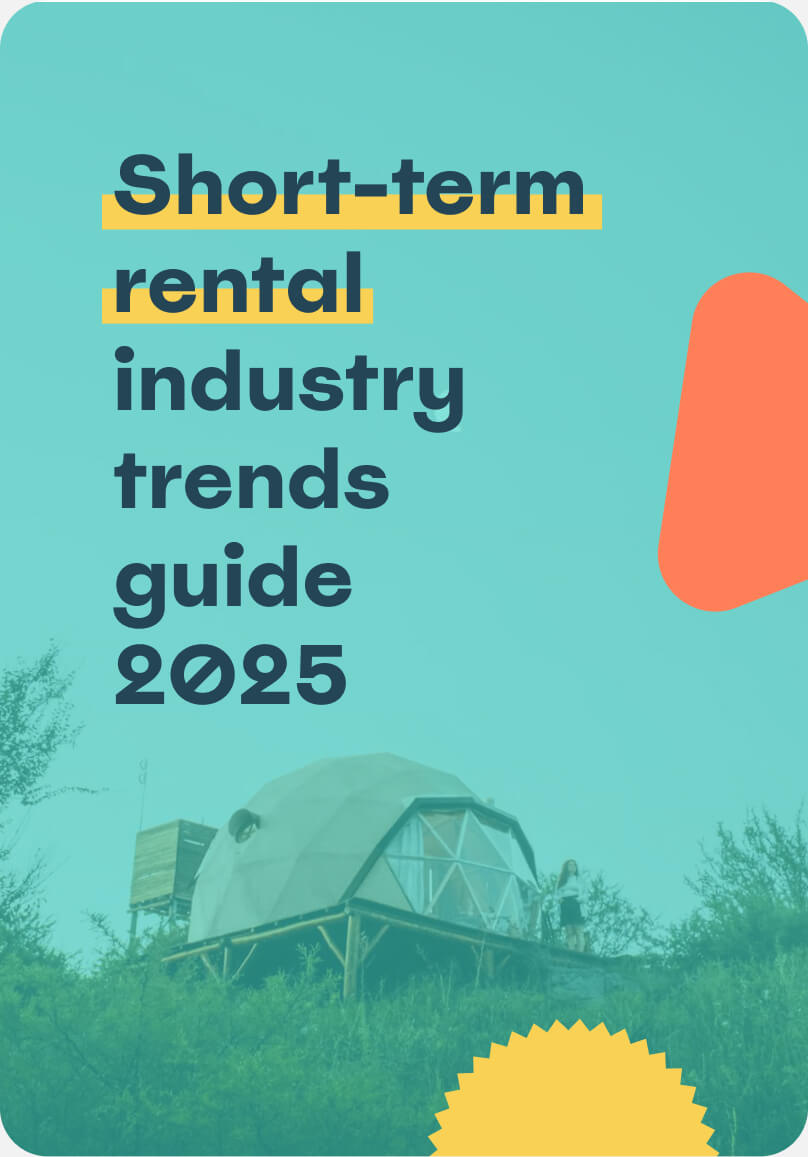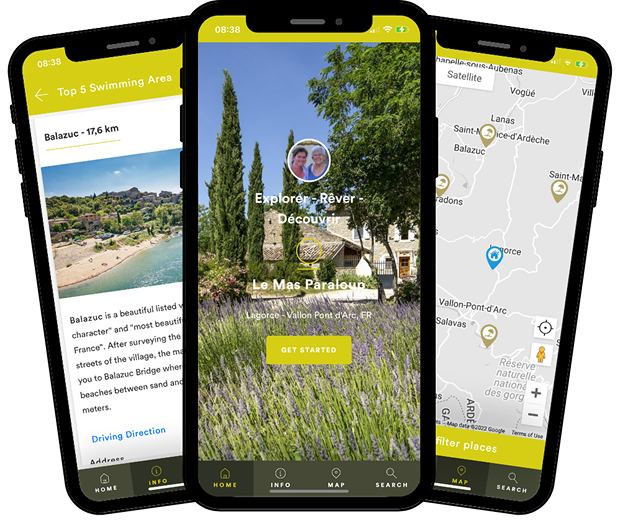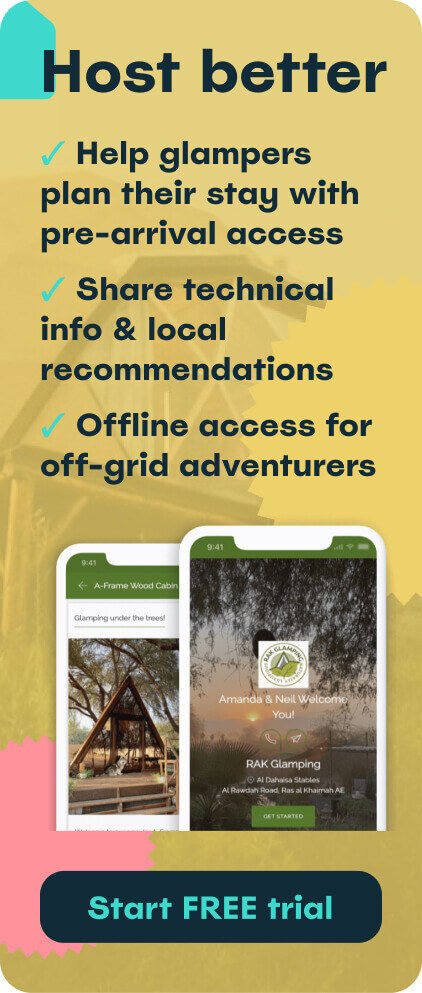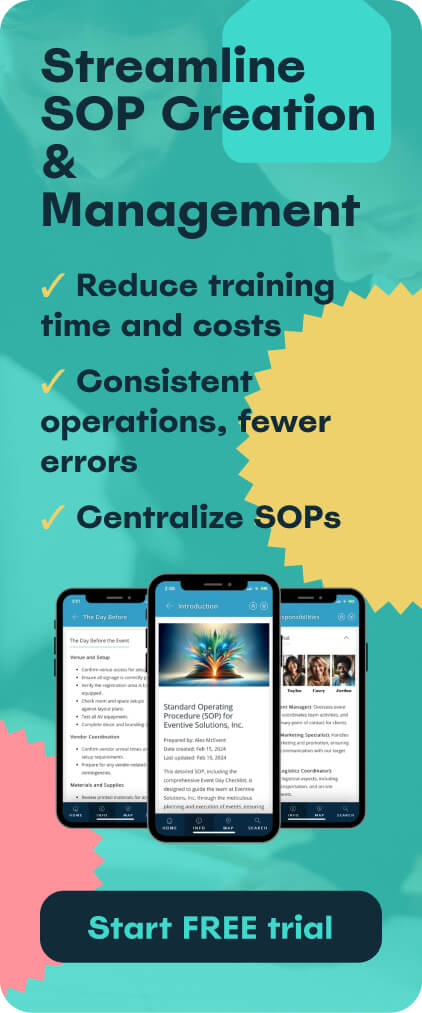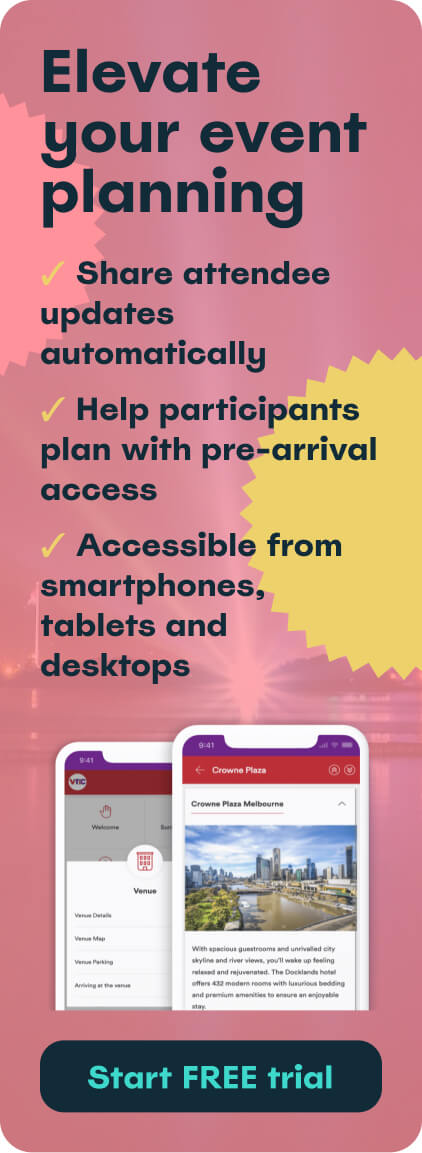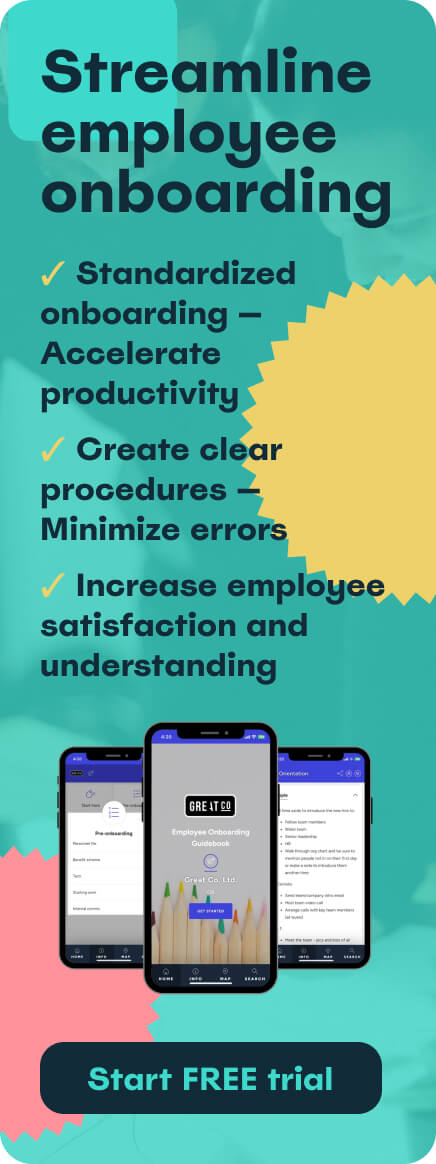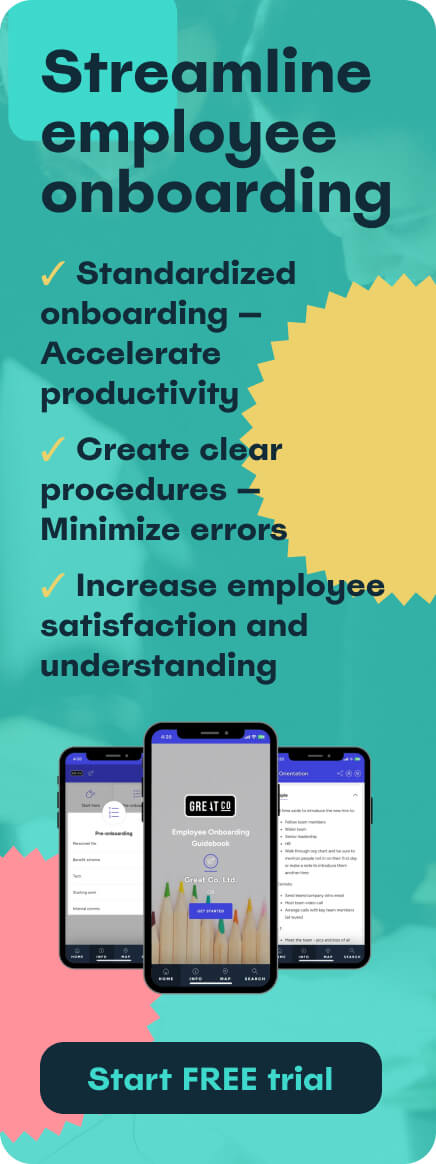In today's competitive talent market, the way you welcome a new employee isn't just an HR formality, it's a critical business process. A poorly executed or confusing first few weeks can result in disengaged hires, early attrition and wasted resources. Conversely, a fantastic employee onboarding experience can instantly transform a new recruit into a productive, committed, and culture-aligned member of your team.
This comprehensive guide will cover:
- What is employee onboarding experience?
- Why employee onboarding experience matters
- 10 Best practices to improve employee onboarding experiences
- Common challenges in employee onboarding
- 10 Great examples of the best employee onboarding experience
- Frequently asked questions
Want to streamline your employee onboarding? Discover how Touch Stay’s digital guidebooks can transform the process.
What is employee onboarding experience?
The employee onboarding experience encompasses every interaction, process, and programme a new hire goes through from the moment they accept a job offer until they are fully integrated into the company culture and productive in their role. It is a long-term strategy, typically lasting several months, rather than a single-day event.
While 'employee orientation' focuses narrowly on administrative tasks, paperwork, and initial introductions, the onboarding experience is a holistic, multi-phased journey designed to achieve several critical outcomes:
- Cultural Integration: Helping the new hire understand and align with the company's values, mission, and working norms.
- Role Clarity: Ensuring the employee fully grasps their responsibilities, performance expectations, and how their role contributes to the wider business strategy.
- System and Resource Access: Providing all the necessary physical and digital tools, accounts, and knowledge to succeed.
- Social Connection: Facilitating the building of relationships with their team members, managers, and cross-functional colleagues.
A successful onboarding experience is personal, structured, and focused on making the new employee feel supported, valued, and excited about their future with the company.
Pro tip: Discover what makes a good onboarding experience?
Why employee onboarding experience matters
The quality of your employee onboarding experience directly impacts key business metrics, from talent retention to time-to-productivity. It is one of the most powerful tools a business has for protecting its investment in new talent and securing long-term loyalty.
Here’s why focusing on improving this experience is non-negotiable for modern businesses:
- It boosts retention: Employees who go through a structured, positive onboarding programme are up to 69% more likely to remain with the company for at least three years. This is a massive cost-saver, as replacing an employee can be very expensive.
- It speeds up productivity: An effective onboarding process reduces the time it takes for a new hire to become fully productive and independent. Providing clear guidance and resources upfront eliminates delays caused by confusion and repetitive questions. To further streamline this process, many companies are now exploring sophisticated tools.
Pro tip: Learn more about how to select the right employee onboarding software
- It drives engagement and morale: A warm, well-organised welcome signals that the company is professional and cares about success. This positive first impression builds trust, fosters emotional commitment, and improves overall employee morale across the entire team.
- It embeds company culture: Onboarding is the first major opportunity to showcase your company's values in action. When your process is transparent, inclusive, and supportive, it reinforces the culture you are trying to build.
10 Best practices to improve employee onboarding experiences
Improving your new hire experience requires a blend of organisational structure, human connection, and technological efficiency. These 10 best practices provide a framework for creating a streamlined, engaging, and memorable welcome.
1. Complete paperwork before Day 1
Nothing drains the excitement of a new job like spending the first morning hunched over a stack of forms. This is time that could be spent integrating with the team or learning about the role.
- Actionable step: Implement a pre-boarding phase where all necessary administrative tasks like contracts, tax forms and compliance documents are completed digitally before the employee’s official start date.
- Benefit: Allows Day 1 to be focused purely on cultural immersion, introductions, and excitement.
2. Help the employee set up properly
The equipment should be ready and functioning before the new employee walks through the door (or logs on). This eliminates the frustration of waiting days for necessary tools or struggling with IT issues.
- Actionable step: Work closely with the IT department to ensure the new hire's laptop, peripherals, software licenses, email accounts, and relevant system access are all provisioned and tested the day before they start.
- Remote best practice: Ship the welcome kit and necessary technology well in advance of the start date, and schedule a brief pre-start video call with IT support.
3. Introduce the new employee to the team
Feeling like an outsider is a fast track to low engagement. The manager should plan structured, intentional introductions that go beyond a quick wave.
- Actionable step: Schedule dedicated 15-minute one-on-ones with key team members and cross-functional colleagues. A fun, all-hands email introducing the new hire's background and a personal fact (with their permission) can also set the stage.
- Tip: Include the new starter in team lunches or coffee breaks right from the start.
4. Utilise digital guidebooks
The most common question new employees ask is, "Where do I find X?" Consolidating all critical information (holiday policy, brand guidelines, IT troubleshooting) into a single, user-friendly digital resource is transformative for the employee onboarding experience.
Digital guidebooks empower new employees to find answers themselves, reducing the cognitive load on managers and colleagues who would otherwise be answering the same questions repeatedly.
Touch Stay is used by forward-thinking companies to build dynamic, easy-to-navigate digital employee handbooks, SOPs, and training guides.

Why digital guidebooks are a game-changer for onboarding:
- Single source of truth: Everything from HR policies to IT troubleshooting is in one intuitive place.
- Always up-to-date: Managers can instantly update information without needing to republish a PDF manual.
- Mobile-friendly: Accessible on any device, allowing the new employee to reference materials wherever they are.
By implementing a solution like Touch Stay, you can save countless hours and significantly enhance your new hire's autonomy and experience.
5. Assign a work buddy/mentor
The manager provides technical guidance; the buddy provides social and cultural guidance. A dedicated onboarding buddy or mentor gives the new hire a low-pressure point of contact for the "silly questions" they might be hesitant to ask their manager.
- Actionable step: Pair the new employee with a non-managerial colleague from the same or a closely related department for the first 90 days.
- Goal: The buddy should proactively arrange weekly coffee breaks and act as a guide to the company's unwritten rules and social structures.
6. Provide welcome gifts or company merch
A welcome kit (or "swag bag") is a simple but highly effective way to create instant emotional connection. It makes the new employee feel like they are officially part of the club.
- Actionable step: Send a physical box containing high-quality, useful branded items (e.g., a nice water bottle, a comfortable hoodie) and, crucially, a personalised, handwritten welcome note from the hiring manager or a senior leader.
- Tip: For remote hires, ensure the kit arrives before or on their first day.
7. Facilitate socialisation
Productivity relies on relationships. New employees need structured opportunities to build bonds outside of formal work meetings.
- Actionable step: Dedicate budget and time for new hire-specific social events, such as a team lunch, or inviting the new hire to an upcoming company social event (even if it's pre-start).
- Consideration: Make sure these activities are inclusive for both in-office and remote team members.
8. Get to know the new employee personally
The best onboarding processes are not generic; they are personalised. The manager should focus on the individual's hopes, fears, and working style, not just their job description.
- Actionable step: Managers should schedule a dedicated 'get-to-know-you' conversation during the first week, focused on topics such as their preferred communication style and their career aspirations.
- Outcome: This builds a strong manager-employee relationship from the outset and demonstrates a people-first mindset.
9. Offer training and ongoing support
Onboarding shouldn't stop after the first week. Effective training should be phased over the first 30, 60, and 90 days, with clear milestones.
- Actionable step: Implement a formal 30-60-90 day plan with specific goals for the new hire. This structured approach helps them track their progress and provides the manager with clear metrics for success.
- Pro-tip: Use digital guides for core, repeatable training modules, freeing up live training for complex, role-specific content.
10. Ask for feedback or run a survey
The only way to know if your onboarding is working is to ask the people who just went through it. This also shows the new employee that their opinion matters right from the start.
- Actionable step: Send out an anonymous onboarding survey at the 30-day mark, asking specific questions about their experience with paperwork, equipment setup, training clarity, and cultural fit.
- Crucial: Use this feedback to immediately iterate and improve the process for the next cohort of new hires.
Pro tip: Learn more on how to onboard a new employee: processes, best practices and metrics
Common challenges in employee onboarding
Even with the best intentions, companies often stumble during the onboarding process. Recognising these common pitfalls is the first step towards rectifying them and delivering a better employee onboarding experience.
The main challenges generally fall into three categories: lack of structure, information overload, and poor technology integration.
- The "Firehose" Approach: Trying to cram months of information into a single day or week overwhelms new hires, leading to low retention of critical information and high stress.
- Solution: Space out training and information delivery over several months.
- Solution: Space out training and information delivery over several months.
- Lack of Manager Involvement: If the process is delegated entirely to HR, and the direct manager fails to connect, the new hire will feel isolated and directionless.
- Solution: Managers must own the cultural and performance aspects of onboarding.
- Solution: Managers must own the cultural and performance aspects of onboarding.
- The Technology Scramble: Equipment isn't ready, access rights are missing, and the new hire spends half their first week waiting for passwords. This signals a lack of preparation.
- Solution: Create and enforce a checklist for IT and managers, executed at least one week pre-start.
- Solution: Create and enforce a checklist for IT and managers, executed at least one week pre-start.
- Inconsistent Experience: A decentralised process where every department handles onboarding differently results in an uneven experience.
- Solution: Use a standardised, centralised platform, like a digital guidebook, to ensure core policies and information are delivered consistently across the business.
10 Great examples of the best employee onboarding experience
Inspiration can be found in companies that treat onboarding as a strategic imperative. These organisations leverage structure, culture, and technology to create memorable and highly effective welcoming programmes.
Google: The data-driven 'Noogler' system
Google famously uses a "Noogler" (New Googler) system that relies on data and simple interventions. Their onboarding is structured, leveraging a buddy system and providing new hires with a clear, personalised roadmap from day one, significantly improving time-to-productivity.
Airbnb: Cultural immersion first
Airbnb's onboarding is famously focused on cultural integration. New hires spend their first week learning about the company's core mission of "belonging," and are encouraged to become users of the product immediately.
Zappos: Culture is job one
Zappos’ onboarding is an intense four-week cultural deep-dive. They place so much emphasis on cultural alignment that they famously offer new hires $2,000 to quit if they feel the company is not the right fit, ensuring commitment to their customer-first ethos.
Netflix: Freedom and responsibility
Netflix’s onboarding process focuses on conveying its core philosophy of "freedom and responsibility." New hires are given immediate autonomy to take ownership of their roles, supported by an extensive, highly referenced culture deck that outlines expectations.
Zapier: Automation for the human touch
Zapier uses its own automation tools to eliminate manual onboarding tasks like managing calendars and pairing buddies. By automating the administrative minutiae, the HR team is freed up to concentrate on the personal, human elements of welcoming a new remote hire.
HubSpot: The six-month journey
HubSpot treats onboarding as a continuous six-month programme, moving beyond the traditional 90-day window. Their “Foundations” programme ensures employees are continuously learning about the company's tools, mission, and values, resulting in exceptionally well-rounded employees.
Buffer: Radical transparency
Buffer extends its radical transparency philosophy to its onboarding. New hires are immediately given access to company data, salaries, and internal communications. This open approach builds trust from day one and fosters a sense of immediate belonging and ownership.
Microsoft: Structured career development
Microsoft provides a highly structured and comprehensive onboarding experience, complete with personalised plans and access to an extensive library of resources. Their process focuses heavily on career development, connecting new hires with mentors and offering skills training.
LinkedIn: The [in]troduction programme
LinkedIn’s award-winning ‘[in]troduction’ programme is designed to connect new hires with the company’s mission and values immediately. It includes educational sessions, meet-and-greets with senior leaders, and a strong emphasis on networking.
itrinity: Digital welcome packs for global hires
itrinity, a technology and digital consultancy, uses an approach that focuses on providing an instant, comprehensive digital welcome. For a company with a growing global footprint, they rely on digital welcome packs and clear, easy-to-access resources to ensure that every new hire receives consistent, up-to-date information regarding policies, IT setup and company culture.
Investing in your employee onboarding experience is not a cost—it is an investment that yields measurable returns in retention, productivity, and culture. By shifting your focus from simply processing paperwork to strategically integrating new team members, you can transform the first few months from a period of uncertainty into a runway for success.
Ready to streamline your HR processes, reduce repetitive questions and deliver a world-class welcome? Find out how Touch Stay’s digital guidebooks can transform your employee onboarding.
Frequently asked questions
A good employee onboarding experience is structured, consistent, and personalised. It goes beyond orientation by focusing on cultural integration and socialisation. It ensures all necessary tools are available before the start date, provides a buddy or mentor, and spaces out essential training over several months to prevent information overload.
While orientation typically lasts a day or a week, the onboarding experience should last significantly longer. Best practice suggests a minimum of 90 days, but the most successful programmes often extend to six months or even a full year to ensure deep integration, sustained productivity, and long-term retention.
Success is typically measured using three core metrics: new hire retention rate (especially within the first year), time-to-productivity (how quickly they achieve specific performance milestones), and employee satisfaction scores (derived from 30/60/90-day feedback surveys).
Tools that improve the experience fall into three main categories: HRIS platforms (for managing paperwork and payroll), communication tools (Slack, Teams, etc.), and digital resource platforms, like Touch Stay, which act as centralised, intuitive digital guidebooks for all company policies, procedures, and training materials.
Employee orientation is a short-term, transactional event focused on introducing the basics: touring the office, signing forms, and meeting the immediate team. The onboarding experience, however, is a long-term, strategic process focused on deeper integration, cultural alignment, and sustained performance management, typically spanning months.

Ned
Ned has clocked up over 11 years in digital marketing and comms, with a strong focus on creating engaging content for a range of brands and agencies. When he’s not writing, he can be found digging for records, peering through his telescope at the night sky, or onboard his local lifeboat where he volunteers as a crewmember.
Be the first to know!
Join our newsletter for early access to:
- ✅ Free guides
- ✅ Pro tips & tricks
- ✅ Time saving tutorials
- ✅ Latest blog posts
- ✅ Checklists & templates
